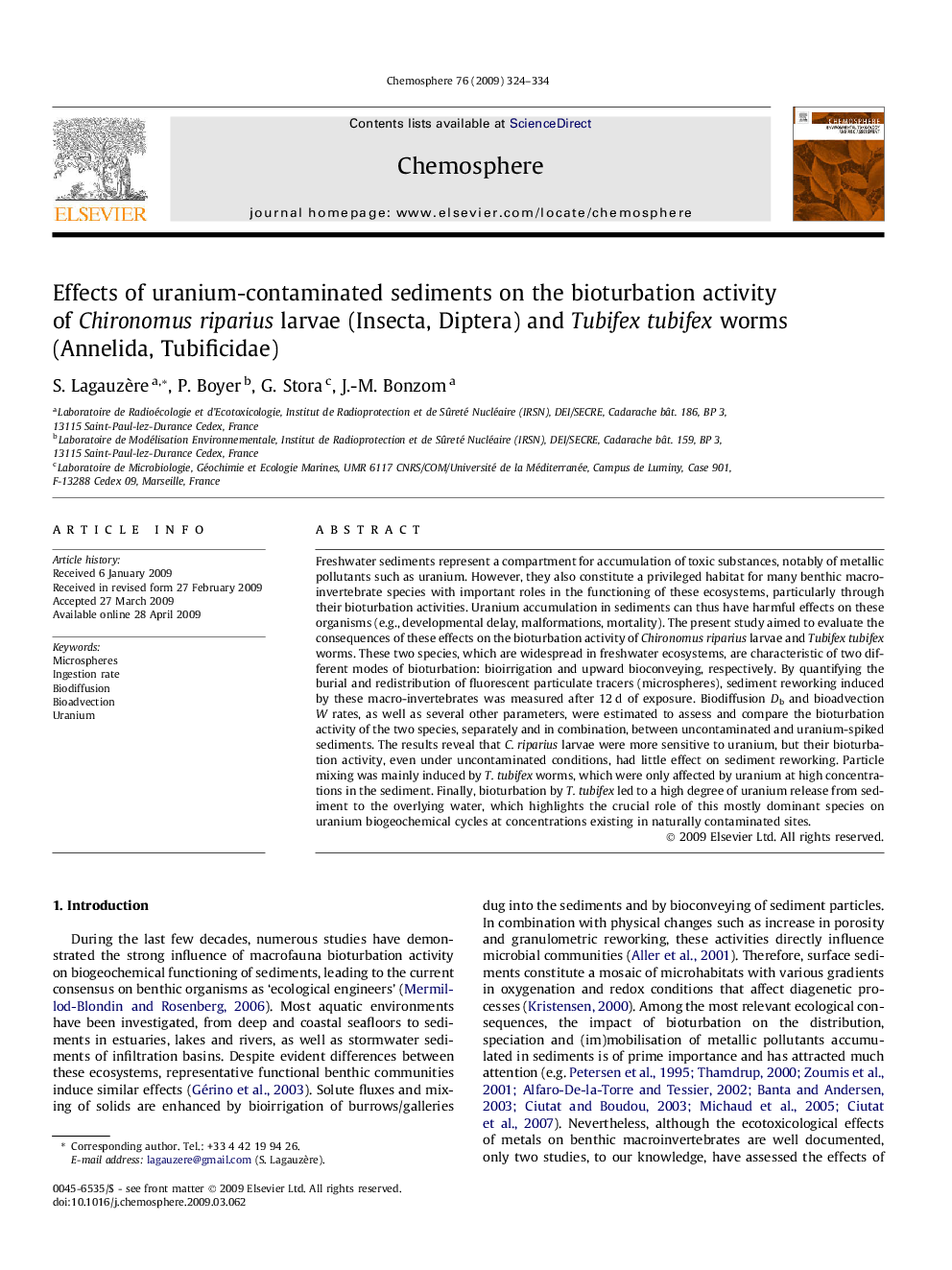| کد مقاله | کد نشریه | سال انتشار | مقاله انگلیسی | نسخه تمام متن |
|---|---|---|---|---|
| 4412861 | 1307655 | 2009 | 11 صفحه PDF | دانلود رایگان |

Freshwater sediments represent a compartment for accumulation of toxic substances, notably of metallic pollutants such as uranium. However, they also constitute a privileged habitat for many benthic macro-invertebrate species with important roles in the functioning of these ecosystems, particularly through their bioturbation activities. Uranium accumulation in sediments can thus have harmful effects on these organisms (e.g., developmental delay, malformations, mortality). The present study aimed to evaluate the consequences of these effects on the bioturbation activity of Chironomus riparius larvae and Tubifex tubifex worms. These two species, which are widespread in freshwater ecosystems, are characteristic of two different modes of bioturbation: bioirrigation and upward bioconveying, respectively. By quantifying the burial and redistribution of fluorescent particulate tracers (microspheres), sediment reworking induced by these macro-invertebrates was measured after 12 d of exposure. Biodiffusion Db and bioadvection W rates, as well as several other parameters, were estimated to assess and compare the bioturbation activity of the two species, separately and in combination, between uncontaminated and uranium-spiked sediments. The results reveal that C. riparius larvae were more sensitive to uranium, but their bioturbation activity, even under uncontaminated conditions, had little effect on sediment reworking. Particle mixing was mainly induced by T. tubifex worms, which were only affected by uranium at high concentrations in the sediment. Finally, bioturbation by T. tubifex led to a high degree of uranium release from sediment to the overlying water, which highlights the crucial role of this mostly dominant species on uranium biogeochemical cycles at concentrations existing in naturally contaminated sites.
Journal: Chemosphere - Volume 76, Issue 3, July 2009, Pages 324–334